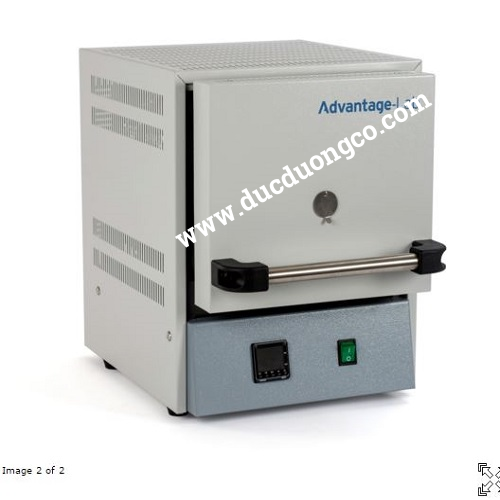How to Choose the Right Laboratory Furnace
A laboratory furnace is a device that provides high temperatures for sample processing, ashing, material thermal shock research, sintering ceramics, glass, etc. Typically, a laboratory furnace consists of heating elements located on three sides and insulation materials made of fiberglass or ceramic plates.
The Importance of Choosing the Right Furnace
The furnace is a critical equipment in many industries, playing an essential role in thermal processing, melting, and material fabrication. Choosing the right furnace offers several significant benefits, including:
-
Ensuring Effective Heating:
- A suitable furnace provides accurate temperatures and proper heating times to achieve the desired product quality.
- Enhances energy efficiency, minimizes heat waste, and reduces operating costs.
- Increases heating productivity to meet production demands.
-
Ensuring Safety:
- A furnace that meets safety standards, equipped with protective systems and effective temperature control, helps prevent fire hazards and workplace accidents.
- Creates a safe working environment, protecting worker health.
-
Extending Lifespan:
- A furnace made from high-quality materials and durable components reduces repair and replacement costs.
- Operates stably with fewer issues, ensuring continuous production.
-
Meeting Usage Needs:
- Furnaces come in various sizes, capacities, shapes, and features to meet the different heating needs of various industries and production processes.
- Choosing the right furnace optimizes production efficiency and enhances competitiveness.
-
Cost Savings:
- An efficient furnace saves energy and reduces operating costs.
- Fewer issues and malfunctions reduce repair and replacement costs.
- Increases productivity and profitability.

Factors to Consider When Choosing a Furnace:
-
Heating Needs:
- Determine the purpose, material type, size, and quantity of products to be heated.
-
Maximum Temperature:
- Choose a furnace with a maximum temperature that meets the material's heating requirements.
-
Size and Capacity:
- Select a furnace with appropriate dimensions for installation space and sufficient capacity for the number of products to be heated.
-
Shape:
- Furnaces come in various shapes, such as box furnaces, tube furnaces, and lift furnaces; choose the shape that suits your needs.
-
Features:
- Furnaces may have additional features like temperature programming, atmosphere control, and data logging; select the features necessary for your research.
-
Manufacturer:
- Choose a reputable manufacturer with good warranty and after-sales service.
-
Price:
- Determine your budget and choose a furnace that fits within it.
Laboratory Furnace with 3 Liters Capacity (PID Type)
Conclusion:
Choosing the right furnace is crucial for ensuring effective heating, safety, cost savings, and meeting usage needs. Carefully consider the factors mentioned above to select the most suitable furnace for your requirements.
Factors to Consider When Choosing a Furnace:
-
Maximum Temperature:
Role of Temperature in Heating Process:
- Stimulates Chemical Reactions: High temperatures provide energy to trigger chemical reactions, promoting physical and chemical changes in materials.
- Changes Material Structure: Temperature affects the micro and macro structure of materials, leading to changes in physical and mechanical properties.
- Removes Impurities: At high temperatures, impurities can vaporize or melt, helping to purify the material.
- Forms New Bonds: High temperatures stimulate the formation of new bonds between atoms, enhancing the material's strength and hardness.
Maximum Temperature Required for Material Research:
- The maximum temperature required depends on factors such as:
- Material Type: Different materials have different melting and heating temperatures. For example, ceramics require higher temperatures than plastics.
- Application: The required heating temperature depends on the application. Materials used in harsh environments need higher heating temperatures than those used in normal conditions.
- Technical Requirements: Some technical processes require specific heating temperatures to achieve desired material properties.
Examples:
- Steel: Heating temperature typically ranges from 800°C to 1200°C, depending on the steel type and application.
- Ceramics: Heating temperature usually ranges from 1200°C to 1600°C.
- Glass: Heating temperature typically ranges from 500°C to 700°C.
Note:
- Choose a furnace with a maximum temperature higher than the required heating temperature to ensure safety and efficiency.
- Refer to material property documentation and application technical requirements to determine the appropriate heating temperature.
- Use specialized thermometers to accurately measure temperature within the furnace.
-
Types of Laboratory Furnaces:
Based on Shape:
- Muffle Furnace: Rectangular-shaped with a front door, commonly used in chemical, biological, and material labs. Can use electric or gas heating elements, with maximum temperatures up to 1800°C.
Tube Furnace: Cylindrical shape, often used for heating materials in rod or wire form. Can use electric or gas heating elements, with maximum temperatures up to 1800°C.
Lift Furnace: Features a lifting mechanism for easy insertion and removal of heavy or large materials. Can use electric or gas heating elements, with maximum temperatures up to 1800°C.
Based on Heating Environment:
- Vacuum Furnace: Creates a vacuum environment in the chamber to remove oxygen and impurities, improving heating quality. Used for high-precision applications like metal and semiconductor heating.
- Atmosphere Furnace: Heats materials in an atmospheric environment. Can use electric or gas heating elements, with maximum temperatures up to 1800°C.
Based on Application:
- Ashing Furnace: Used for ashing biological and medical samples, with a maximum temperature of 500°C to 900°C.
- Ceramic Furnace: Used for ceramics and glass, with a maximum temperature of 1200°C to 1800°C.
- Metal Furnace: Used for metals and alloys, with a maximum temperature of 1000°C to 1800°C.
There are also specialized furnaces like multifunctional, combustion, and drying furnaces.
Choosing the Right Furnace:
- Depends on usage needs, application, and budget. Consider factors like sample size, required heating temperature, heating environment, and additional features to select the most suitable furnace.
Usage and Maintenance Guide:
-
Using the Furnace:
Before Use:
- Read the manufacturer’s instructions carefully.
- Check the power supply and ventilation system for safety.
- Prepare the material samples and place them correctly in the furnace.
During Use:
- Turn on the power switch and set the desired temperature and heating time.
- Close the furnace door and wait until it reaches the set temperature.
- Monitor the heating process and adjust temperature or time if needed.
- Turn off the power switch when the heating process is complete and wait for the furnace to cool down.
Note:
- Do not use the furnace without reading the instructions.
- Avoid overloading the furnace or heating flammable materials.
- Do not touch the furnace when it is operating to prevent burns.
- Keep children or untrained individuals away from the furnace.
-
Maintaining the Furnace:
- Regularly clean the furnace to remove dust and impurities.
- Periodically check components such as heating elements, control systems, and ventilation systems.
- Replace worn or damaged parts according to the manufacturer’s instructions.
- Store the furnace in a dry, cool place when not in use.
Note:
- Use appropriate cleaning solutions for the furnace type.
- Turn off the power before cleaning or maintaining the furnace.
- Contact professional maintenance services for complex issues.
By using and maintaining the furnace properly, you can extend its lifespan and ensure effective operation.
Product Suggestions:
-
Laboratory Furnace from Advantage Lab - Belgium
Description:
- Specially designed for material testing, thermal processing, etc. Suitable for use in laboratories, educational institutions, ceramic workshops, and industrial labs.
Technical Specifications:
- Voltage: 3-phase 230V 50/60Hz
- Color: RAL 7035
- Temperature: Maximum 1100°C
- Temperature Stability: 1°C
- External Dimensions: 650 × 900 × 740 mm
- Internal Dimensions: 315 × 495 × 240 mm
- Weight: 75 kg
- Control Panel: Technical display and temperature measurement.
- Power: 6 (KW)
Contact Us: Click here
-
Gas Laboratory Furnace
Product Description:
- Accurate temperature control according to program, microprocessor control.
- Space-saving with Interlock lock, maintains temperature and operating time, and stores continuous operating programs.
- Features automatic adjustment and temperature calibration.
- Suitable for all gas experiments.
- Safety features to protect circuits from overcurrent and overheating.
- Programmable operation.
Technical Specifications:
- Tube Diameter: Φ50mm/L600mm
- Controller: Pre-installed programmable control
- Display: LCD graphic
- Maximum Heating Temperature: 1200°C
- Accuracy: ±2%
- External Dimensions: w700×d500×h800 mm
- External Material: Powder-coated steel
- Internal Material: Ceramic
- Power Supply: 1-phase, 220V/50/60Hz
Contact Us: Click here
Conclusion:
Laboratory furnaces are essential equipment; therefore, proper use and maintenance are crucial. By following the guidelines, you can ensure safety, efficiency, and extend the lifespan of the furnace. Choose a furnace that meets your needs and research carefully to find the most suitable product.
Comments
Relative post
- The 17th Annual International Medical and Pharmaceutical Exhibition in Ho Chi Minh City
- Basic Understanding of Microscopes
- DUC DUONG TECHNOLOGY SCIENCE CO., LTD Participates in the 17th Medical and Pharmaceutical Exhibition in HCMC
- Microbiological Incubator Role, Application and Instructions for Use




